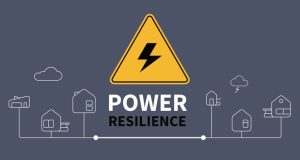AIR CLEANING
In poorly ventilated spaces with a high occupancy and where it is difficult to increase ventilation rates it may be appropriate to consider using air cleaning and ultraviolet disinfection devices.
Room air cleaners are generally standalone devices containing a fan to pull air through a high efficiency air filter. To be effective a High Efficiency Particulate Air (HEPA) filter should be used, which can filter out the COVID-19 virus. However, because the units are only effective over a small area their location is important.
Ultraviolet systems can take various forms but most use light with a wavelength of 254nm to render viruses ineffective by destroying genetic information in their DNA. Any such installation should use equipment with robust test data to show its effectiveness and needs to be of an appropriate size to handle the volume of air requiring treatment. The installation needs to be designed to meet the particular requirements of the space and activities being undertaken.
Getting the ventilation rate right is a difficult balance. Ventilation has well-established associations with health and has a complex relationship with other factors including energy, noise, air quality and thermal comfort. Those modifying an existing system or altering its operation need to be mindful of the possibility of unintended consequences of their actions; for some mechanical installations it would be wise to seek expert advice before taking any action.
For naturally ventilated buildings, where a space is reliant on opening windows and doors for ventilation, the advice is that windows and vents should be used more than normal. In warm weather opening windows is a typical behavioural response, however it is important windows are kept open, even if only by a small amount, to maintain ventilation when it is cooler outside.
Of course, opening windows can result in draughts and occupant discomfort, so where possible desks and should be relocated away from windows (or occupants encouraged to wear jumpers!). An alternative solution is to encourage all occupants to take regular breaks simultaneously throughout the day in order to purge the space through opening windows and doors with outside air to complement background ventilation and further dilute the concentration of aerosols.
Unlike distancing and hand washing, ventilation requirements cannot easily be distilled into one simple approach that everyone can follow. Assessing ventilation in many environments is challenging and will require the type of engineering expertise CIBSE members can provide to ensure any proposed mitigation measures will be effective for a particular building type, ventilation system, user group and activity.
In the longer term, CIBSE expect consideration of infectious disease transmission to be embedded into building regulations, specifically those dealing with the provision of ventilation, in the same way that energy, comfort and air quality are already included. In England and Wales, Approved Document F: Ventilation(iii) is currently under review and CIBSE will be contributing to the review process.
CIBSE COVID-19 ventilation Guidance is available as a free download from the CIBSE website: go to https://www.cibse.org/Coronavirus-covid-19/emerging-from-lockdown





